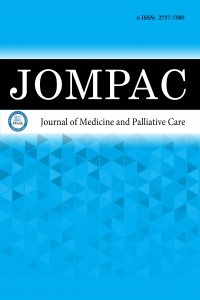1.
Lacroix R, Eason E, Melzack R. Nausea and vomiting during pregnancy: a prospective study of its frequency, intensity, and patterns of change. <em>Am J Obstet Gynecol</em>. 2000;182(4):931-937. doi:10.1016/s0002-9378(00)70349-8
2.
Cedergren M, Brynhildsen J, Josefsson A, Sydsjö A, Sydsjö G. Hyperemesis gravidarum that requires hospitalization and the use of antiemetic drugs in relation to maternal body composition. <em>Am J Obstet Gynecol</em>. 2008;198(4):412.e1-415. doi:10.1016/j.ajog. 2007.09.029
3.
Fell DB, Dodds L, Joseph KS, Allen VM, Butler B. Risk factors for hyperemesis gravidarum requiring hospital admission during pregnancy. <em>Obstet Gynecol</em>. 2006;107(2 Pt 1):277-284. doi:10.1097 /01.AOG.0000195059.82029.74
4.
Committee on practice bulletins-obstetrics. ACOG practice bulletin no. 189: nausea and vomiting of pregnancy. <em>Obstet Gynecol</em>. 2018;131(1):e15-e30. doi:10.1097/AOG. 0000000000002456
5.
Depue RH, Bernstein L, Ross RK, Judd HL, Henderson BE. Hyperemesis gravidarum in relation to estradiol levels, pregnancy outcome, and other maternal factors: a seroepidemiologic study. <em>Am J Obstet Gynecol</em>. 1987;156(5):1137-1141. doi:10.1016/0002-9378(87)90126-8
6.
Eliakim R, Abulafia O, Sherer DM. Hyperemesis gravidarum: a current review. <em>Am J Perinatol</em>. 2000;17(4):207-218. doi:10.1055/ s-2000-9424
7.
Rochelson B, Vohra N, Darvishzadeh J, Pagano M. Low prepregnancy ideal weight:height ratio in women with hyperemesis gravidarum. <em>J Reprod Med</em>. 2003;48(6):422-424.
8.
Bacak SJ, Callaghan WM, Dietz PM, Crouse C. Pregnancy-associated hospitalizations in the United States, 1999-2000. <em>Am J Obstet Gynecol</em>. 2005;192(2):592-597. doi:10.1016/j.ajog.2004.10. 638
9.
Gazmararian JA, Petersen R, Jamieson DJ, et al. Hospitalizations during pregnancy among managed care enrollees. <em>Obstet Gynecol</em>. 2002;100(1):94-100. doi:10.1016/s0029-7844(02)02024-0
10.
Fejzo MS, Macgibbon KW, Romero R, Goodwin TM, Mullin PM. Recurrence risk of hyperemesis gravidarum. <em>J Midwifery Womens Health</em>. 2011;56(2):132-136. doi:10.1111/j.1542-2011.2010.00019. x
11.
Lacasse A, Lagoutte A, Ferreira E, Bérard A. Metoclopramide and diphenhydramine in the treatment of hyperemesis gravidarum: effectiveness and predictors of rehospitalisation. <em>Eur J Obstet Gynecol Reprod Biol</em>. 2009;143(1):43-49. doi:10.1016/j.ejogrb. 2008.11.007
12.
Piwko C, Koren G, Babashov V, Vicente C, Einarson TR. Economic burden of nausea and vomiting of pregnancy in the USA. <em>J Popul Ther Clin Pharmacol</em>. 2013;20(2):e149-160.
13.
Tan PC, Jacob R, Quek KF, Omar SZ. Readmission risk and metabolic, biochemical, haematological and clinical indicators of severity in hyperemesis gravidarum. <em>Aust N Z J Obstet Gynaecol</em>. 2006;46(5):446-450. doi:10.1111/j.1479-828X.2006.00632.x
14.
Topçu H, İskender C, Oskovi A, Timur H, Dağlar K, Danışman N. Risk factors of prolonged hospitalization in patients with hyperemesis gravidarum. <em>Cukurova Med J</em>. 2015;40(1):113-118.
15.
Tayfur C, Burcu DC, Gulten O, et al. Association between platelet to lymphocyte ratio, plateletcrit and the presence and severity of hyperemesis gravidarum. <em>J Obstet Gynaecol Res</em>. 2017;43(3):498-504. doi:10.1111/jog.13228
16.
Tolunay HE, Kahraman NÇ, Varlı EN, et al. First-trimester aspartate aminotransferase to platelet ratio index in predicting intrahepatic cholestasis in pregnancy and its relationship with bile acids: a pilot study. <em>Eur J Obstet Gynecol Reprod Biol.</em> 2021;256:114-117.
17.
Chen JH, Zhai ET, Yuan YJ, et al. Systemic immune-inflammation index for predicting prognosis of colorectal cancer. <em>World J Gastroenterol</em>. 2017;23(34):6261-6272. doi:10.3748/wjg.v23.i34. 6261
18.
Fucà G, Guarini V, Antoniotti C, et al. The pan-immune-inflammation value is a new prognostic biomarker in metastatic colorectal cancer: results from a pooled-analysis of the Valentino and TRIBE first-line trials. <em>Br J Cancer</em>. 2020;123(3):403-409. doi: 10.1038/s41416-020-0894-7
19.
Qi Q, Zhuang L, Shen Y, et al. A novel systemic inflammation response index (SIRI) for predicting the survival of patients with pancreatic cancer after chemotherapy. <em>Cancer</em>. 2016;122(14):2158-2167. doi:10.1002/cncr.30057
20.
Tan PC, Jacob R, Quek KF, Omar SZ. Readmission risk and metabolic, biochemical, haematological and clinical indicators of severity in hyperemesis gravidarum. <em>Aust N Z J Obstet Gynaecol</em>. 2006;46(5):446-450. doi:10.1111/j.1479-828X.2006.00632.x
21.
Tan PC, Tan NC, Omar SZ. Effect of high levels of human chorionic gonadotropin and estradiol on the severity of hyperemesis gravidarum. <em>Clin Chem Lab Med</em>. 2009;47(2):165-171. doi:10.1515/CCLM.2009.041
22.
Tan PC, Jacob R, Quek KF, Omar SZ. Indicators of prolonged hospital stay in hyperemesis gravidarum. <em>Int J Gynaecol Obstet</em>. 2006;93(3):246-247. doi:10.1016/j.ijgo.2006.03.012
23.
Derbent AU, Yanik FF, Simavli S, et al. First trimester maternal serum PAPP-A and free β-HCG levels in hyperemesis gravidarum. <em>Prenat Diagn</em>. 2011;31(5):450-453. doi:10.1002/pd. 2715
24.
Morris ZH, Azab AN, Harlev S, Plakht Y. Developing and validating a prognostic index predicting re-hospitalization of patients with hyperemesis gravidarum. <em>Eur J Obstet Gynecol Reprod Biol</em>. 2018;225:113-117. doi:10.1016/j.ejogrb.2018.04.028
25.
Peled Y, Melamed N, Hiersch L, Pardo J, Wiznitzer A, Yogev Y. The impact of total parenteral nutrition support on pregnancy outcome in women with hyperemesis gravidarum. <em>J Matern Fetal Neonatal Med</em>. 2014;27(11):1146-1150. doi:10.3109/14767058.2013.851187
26.
Atanackovic G, Wolpin J, Koren G. Determinants of the need for hospital care among women with nausea and vomiting of pregnancy. <em>Clin Invest Med</em>. 2001;24(2):90-93.
27.
Poursharif B, Korst LM, Fejzo MS, MacGibbon KW, Romero R, Goodwin TM. The psychosocial burden of hyperemesis gravidarum. <em>J Perinatol</em>. 2008;28(3):176-181. doi:10.1038/sj.jp. 7211906

